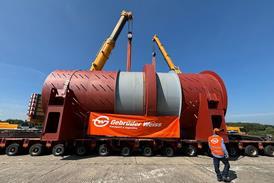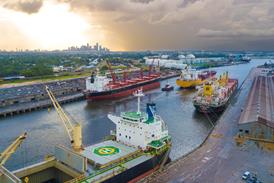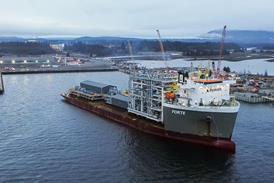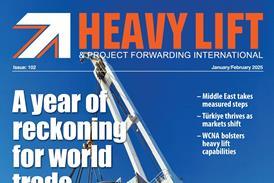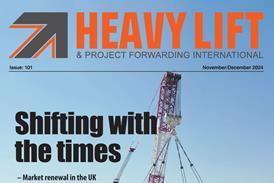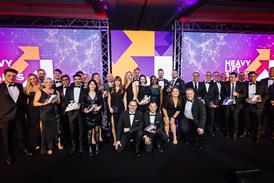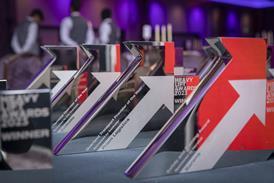On April 17, the United States Trade Representative (USTR) issued the final notice of action following its investigation into China’s shipbuilding and logistics sector. According to the USTR draft Federal Register notice, the USA will begin charging fees on Chinese-owned, operated and built vessels arriving at its ports in October 2025. Most multipurpose and heavy lift tonnage appears to fall beyond the scope of the regulations.
These actions come after a year-long Section 301 investigation, which included USTR convening a two-day public hearing, receiving nearly 600 public comments, and consulting with government agency experts and USTR cleared advisors. Albeit dialled back from the original fees proposed in February 2025, the costs remain substantial and will be implemented in two stages.
Effective October 14, 2025, fees will be added to vessels with Chinese operators or owners. The fees will be based on net vessel tonnage, increasing incrementally over time: Fees will begin at USD50 per net ton of the arriving vessel and will move up to USD140 per net ton over the course of three years. These will be collected at the first US port call of affected vessels on a particular string.
For China-built ships, fees will be based on net tonnage or containers, increasing incrementally over the following years. Fees will begin at USD18 per net ton of the arriving vessel and will move up to USD33 per net ton over the course of three years. Alternatively, fees will be charged based on containers discharged, starting at USD120 per container, and increasing to USD250 per container. The higher of the two fees will be due.
USTR said that fee remissions are available for vessel operators that order and take delivery of a US-built vessel with equal/greater capacity within a three-year time period. There are a number of other exemptions from the fees, including empty/ballast vessels, ships with US beneficial ownership of at least 75 percent, vessels on short-haul voyages, and specialised vessels for the transport of liquid, bulk chemicals – but these do not apply to Chinese owners and operators.
Moreover, HLPFI understands that Chinese-built vessels smaller than a Panamax (55,000 dwt / 4,000 teu containerships / 80,000 dwt bulkers) are fully exempt. This is a silver lining for multipurpose vessel owner/operators as the vast majority of vessels fall well below this threshold.
Chinese-built vessel servicing the Great Lakes, Caribbean and US territories are also exempt.
Fees will not be imposed on shipping lines that have a percentage of Chinese-built ships in their fleet or have newbuild orders placed at Chinese yards, another concession from the February 2025 announcement.
For all foreign-built car carriers, fees will be set at USD150 per car equivalent unit capacity, but operators can receive fee remissions if they order and take delivery of a US-built vessel with equal/greater capacity within a three-year time period.
The second stage of fees will come into effect in three years’ time, said USTR.
For shipping lines to qualify for exemptions based on owning operating US-built tonnage, the country’s shipbuilding sector will need to accelerate development at a rapid rate of knots. Presently, China manufactures an estimated 1,700 large ships annually, compared to the USA’s five.
World Shipping Council (WSC) voiced serious concerns regarding the port fee regime. “Revitalising America’s maritime sector is an important and widely shared goal — one that requires a long-term, legislative and industrial strategy. We welcomed the vision outlined in the president’s executive order, which proposes targeted initiatives to strengthen US shipbuilding, ports, and supply chain resilience. Unfortunately, the fee regime announced by USTR is a step in the wrong direction as it will raise prices for consumers, weaken US trade and do little to revitalise the US maritime industry,” said Joe Kramek, president and ceo at WSC.
An update from the law firm Watson Farley & Williams (WFW), published on April 22, highlighted areas of the new regulations that require clarification. It said that ‘owners’ and ‘operators’ are defined by reference to US Customs and Border Protection (“CBP”) Form 1300. The instructions to the CBP Form state that the operator is defined as the party listed on the Certificate of Financial Responsibility (Water Pollution) unless other verifiable charter or lease arrangement indicates otherwise. The form does not include guidance as to who is the owner.
The term ‘China’, meanwhile, covers those from the People’s Republic of China, Hong Kong and Macau, although not Taiwan.
WFW also highlighted vagaries around the US exemptions for US-owned vessel. It noted that there is no definition of ‘US persons’ or what constitutes ‘beneficial ownership.’ “The reference may indicate that the US citizenship 75 percent ownership requirement for vessels operating in the coastwise trade of the USA (known as the Jones Act) would be used. It is unclear whether ‘US persons’ in the USTR Notice mean the same thing as ‘US citizens’ under the Jones Act, or how ownership by a publicly traded company, private equity fund, or other diffuse ownership structure would be analysed under the USTR Notice,” said the law firm.

